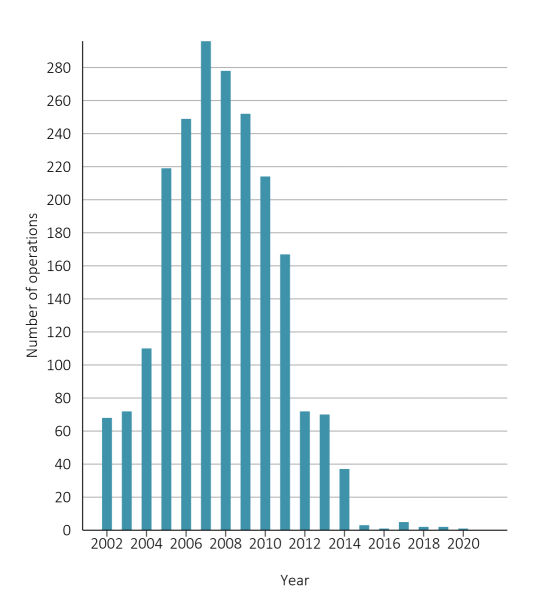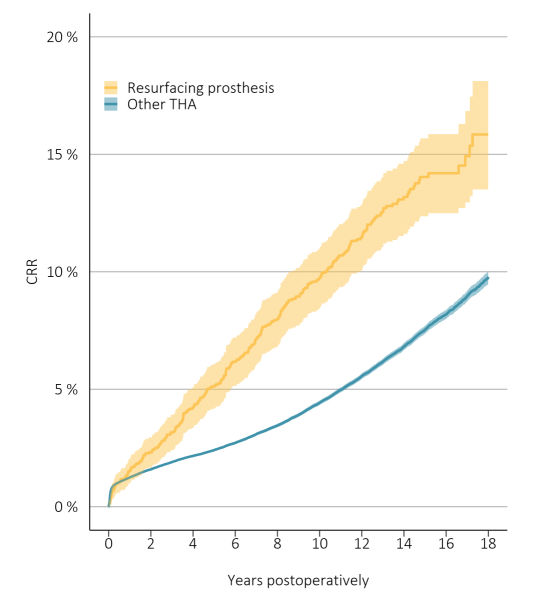Resurfacing prosthesis in the hip
We often get questions regarding hip surgery with resurfacing hip prosthesis, a type of hip replacement surgery that differ from a usual one. In an operation with resurfacing hip prosthesis the joint head is replaced with a metal cap that leads to a metal joint cup.
The method has been used on a small scale in Sweden. Around 2007, when several international studies began to note an increased incidence of complications, the use decreased. In the autumn 2018, the Swedish Hip and Knee Association, a sub-association of the Swedish Orthopedic Association, made a common decision not to perform resurfacing hip replacement operations in Sweden because the risks of the operation are too great. The complications that lead to reoperation are usually unpredictable, of a different nature and more serious than those that affect individuals who have undergone a conventional hip replacement operation. In addition, it is unclear how the increased level of metal ions that often occurs after surgery with a resurfacing hip prosthesis affects health in the long term.
The Swedish Hip and Knee Prosthetics Association's recommendation is to regularly examine patients who have resurfacing hip prosthesis with a clinical examination, X-ray and MRI and check the level of metal ions in the blood.
Number of operations with resurfacing hip prosthesis
Here we report how many operations with resurfacing hip prosthesis were carried out in Sweden 2002 to 2020.
2002 – 68
2003 – 72
2004 – 110
2005 – 219
2006 – 249
2007 – 296
2008 – 278
2009 – 252
2010 – 214
2011 – 167
2012 – 72
2013 – 70
2014 – 37
2015 – 3
2016 – 1
2017 – 5
2018 – 2
2019 – 2
2020 – 1
Proportion who needed revision of hip prosthesis
When we compare those who received resurfacing hip replacement with those who received a conventional hip replacement it is shown that those with resurfacing hip prostheses more often had to have their hip prosthesis replaced.
10 years after the operation, the probability of not having had to replace the prosthesis is 95% for those who had surgery with a conventional hip replacement. Those who had undergone resurfacing hip replacement had less than a 90% chance of retaining their original prosthesis.
Publications with data from the Swedish Arthroplasty Register considering resurfacing hip prosthesis
For patients


